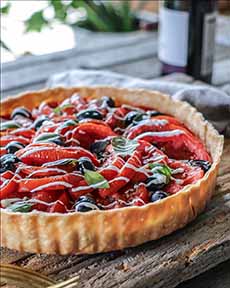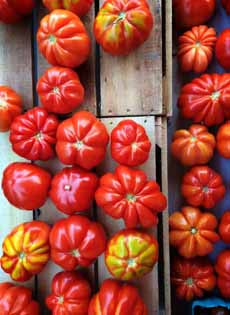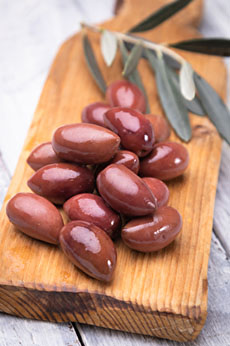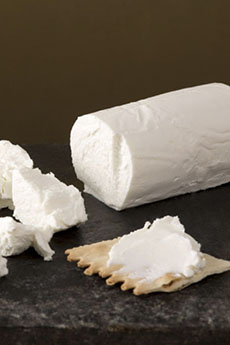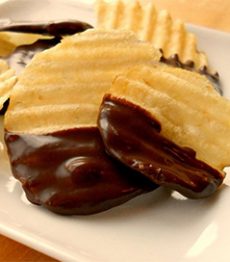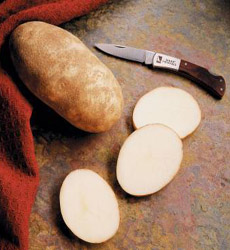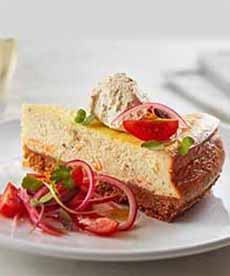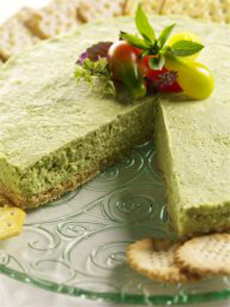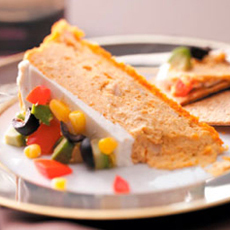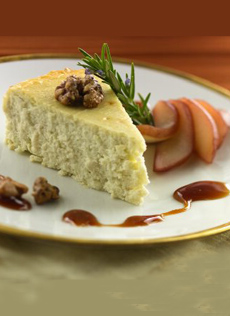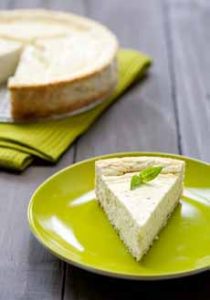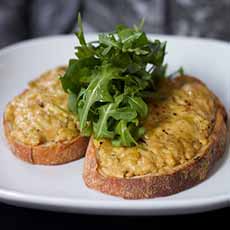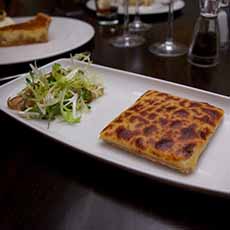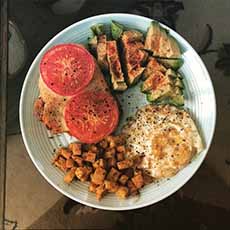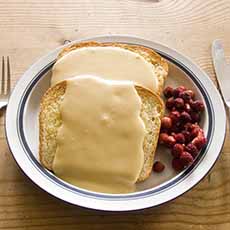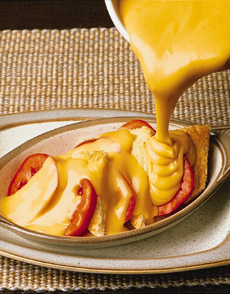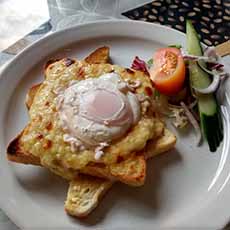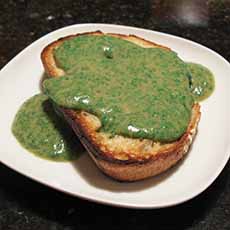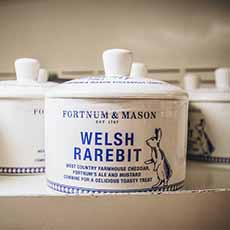|
September is California Wine Month, and one of California’s most distinguished wines is Zinfandel (it is known there as a “heritage grape.”
Zin, as it’s called for short, is a black-skinned wine grape (photo #6) that produces a robust, bold and spicy red wine that can stand up to the most robust and rich foods.
While the Zinfandel grape is only grown in some 10% percent of California vineyards, one of the Zins, made by Ridge Vineyards near Santa Cruz, California, is known the world over.
Zinfandel grapes have a high sugar content, that enables the wine to be fermented into higher levels of alcohol, the best frequently reaching 15.5% A.B.V.
The taste of the Zin depends on the ripeness of the grapes from which it is made and the microclimate in which it is grown.
Red berry fruit flavors like raspberry predominate in wines from cooler areas.
Blackberry, anise and pepper notes in wines made in warmer areas.
RED ZINFANDEL VS. WHITE ZINFANDEL
Don’t confuse red Zinfandel with White Zinfandel, the latter a wine produced during an accident at Sutter Home Family Vineyards in 1948.
It was created when the fermentation of a vat of Zinfandel, a natural process, suddenly stopped in the middle. The interim stage where it stopped showed wine with a pink shade.
Winemaker Bob Trinchero tasted it, and found it to be like a semi-sweet rosé.
He named the blush-style (i.e. pinkish) wine White Zinfandel, and it subsequently had six times the sales of his Red Zinfandel. The California blush wine craze was on!
When “Zinfandel” is mentioned, however, it refers to the red wine.
On to the good stuff: Ridge Zinfandel, a collector’s wine, made to age.
RIDGE VINEYARDS ZINFANDEL
The best Zinfandel, hands down, is produced by Ridge Vineyards, headquartered in Cupertino, California, which has been producing Zinfandel since 1964.
The vineyard focuses on single-vineyard bottlings, with each bottling displaying the unique qualities of its terroir*.
Today, Ridge has some 20 different vineyards growing Zinfandel. Each vineyard’s harvest goes into a single bottling with that vineyard’s name.
Some are full-bodied, some are medium-bodied.
Two of our favorites—Geyserville and Lytton Springs—are blends.
You can see all the vineyards on the company website.
In addition to Zin, the vineyard produces an acclaimed Cabernet Sauvignon; and in small quantities, Carignane, Grenache, Petite Sirah and Syrah. Its one white wine, Chardonnay, is made in limited amounts.
Ridge produces wine at two winery locations in northern California.
The original winery is located on Monte Bello Ridge in Santa Clara County, California, south of Los Altos and west of Cupertino.
The other Ridge winery facilities are at Lytton Springs in the Dry Creek Valley area of Sonoma County.
The signature wine of Ridge is its Monte Bello, a Bordeaux-style blend of Cabernet Sauvignon mixed with varying percentages of other grapes grown in the same location: usually Merlot, Petit Verdot, and occasionally, Cabernet Franc.
Monte Bello is simply splendid, a wine ready for long aging. Just about every wine collector wants it.
The 2013 vintage currently sells for $399.99 per bottle.
We found the 2014 for $275.00.
You can find the 2016 vintage for $224.94.
The current vintage, 2017, sells for $230 on the Ridge website.
A good vintage can lay down for several decades, and still show its great structure, complexity, and balance.
PAIRING FOODS WITH ZINFANDEL
While Ridge pairs with the finest steak, it also pairs with a more humble burger. With turkey, it’s a winner (we always have a bottle on Thanksgiving).
Zinfandel pairs with food that demand full- or medium-body red wines. Note that different brands of Zin are light, medium or full-bodied. Most of the Ridge wines are full-bodied.
Fish & Shellfish: grilled/seared fish, seafood stews and soups.
Meats: Beef, lamb, pork, venison, sausage; and meat-based dishes like chili (great with barbecue, too).
Pasta/Pizza: With tomato-based sauces.
Poultry: Duck, game fowl, turkey and chicken (roasted or with a heavier sauce).
Soups & Stews: bold and hearty recipes.
HISTORY OF ZINFANDEL
Based on archaeological studies, domestication of the wild grape vine, Vitis vinifera, occurred around 6000 B.C.E. in the southern Caucasus. A mountainous region at the intersection of Europe and Asia, it stretches between the Black Sea and the Caspian Sea.
Shortly thereafter, winemaking commenced and grape cultivation spread to the Mediterranean and surrounding regions. Different grape varieties mutated or were bred. Zinfandel’s progenitor seems to have come from Croatia.
Croatia once had several indigenous grape varieties related to Zinfandel. This diversity suggests that the grapes have been grown in Croatia longer than anywhere else—perhaps as early 1300 B.C.E., making it one of the oldest grape cultivars grown today [source].
Known as Crljenak Kaštelanski (“black grape of Kastel,” prounounced tserl-yee-EHNAK kashh-tell-ANN-skee), these wines formed the basis of Croatia’s wine industry in the 19th century.
Many of the vines of Europe were wiped out in the phylloxera epidemic of the late 19th century, including Crljenak Kaštelanski. Today just nine vines of locally-known “Crljenak Kaštelanski” remain, discovered in 2001 on the Dalmatian coast of Croatia.
|
|

[1] Ridge Monte Bello, Ridge’s signature wine, is not a Zin but a Bordeaux blend. Sought after by collectors, it’s hundreds of dollars a bottle. The Zinfandels are more “accessible” (all photos © Ridge Vineyards).

[2] Ridge Lytton Springs Zin with rack of lamb.

[3] Ridge and other Zins are also great drinking with a burger.
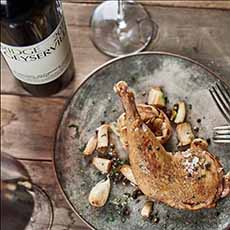 [4] Ridge Geyserville, one of the top three Ridge Zins, with roast duck.
[4] Ridge Geyserville, one of the top three Ridge Zins, with roast duck.

[5] You can’t go wrong drinking Zinfandel with steak.

[6] A cluster of Zin grapes: black-hued, large and juicy.
|
DNA analysis has revealed that Zinfandel is genetically equivalent to the Croatian grapes Crljenak Kaštelanski and Tribidrag, as well as a 100% match to the Primitivo grape variety grown in Apulia region of Italy (the “heel”), where it was introduced in the 18th century, likely from Croatia.
Crljenak Kaštelanski found its way to the U.S. in the mid-19th century. In 1829 Colonel George Gibbs, a horticulturist on Long Island, received shipments of different grapevines from the Schoenbrunn Collection of horticultural materials in Vienna, which documented and maintained grapevines from the Austria-Hungarian Empire.
His estate in Queens, Long Island ultimately became Ravenswood Winery and is now located in Sonoma, California.
Gibbs visited Boston in 1830 and sold some vines to local horticulturist Samuel Perkins, who began selling “Zenfendal” soon afterward [source].
In 1830, Gibbs also supplied Prince with “Black St. Peters,” a similar variety that may have come from England, where many vines have “St. Peters” in their names. Little is known about this vine, except that the Black St. Peters vines that arrived in California in the 1850s were the same as what became known as Zinfandel by the 1870s [source].
Zinfandel grapes were brought to California in 1852 by Frederick Macondray, a sea captain who carried on trade between California and Massachusetts and who was also involved in horticulture ventures.
Zinfandel soon was planted in Napa and Sonoma Valleys and rapidly became California’s most important wine grape. “Zeinfandall” was first exhibited at the Mechanics Institute Exhibition in San Francisco in 1858.
Much of the early planting of Zin was done by New Englanders who had come to California with the Gold Rush. They had planted 34,000 acres of Zin by 1888, making it California’s most planted wine grape of the time. [source]
(Today, the red grape plantings are 22% Cabernet Sauvignon, 18% Pinot Noir, 14% Merlot, 9%-10% Zinfandel, with lesser amounts of other grapes [source]).
Zinfandel was adopted by the Italian immigrants who arrived in the late 1800 and early 1900’s who kept it alive and thriving during Prohibition with their home winemaking.
We thank them for the survival of this wonderful wine.
WHERE DID THE NAME ZINFANDEL COME FROM?
A lot of research has been done to make a connection between Crljenak and Zinfandel. Here’s a full discussion.
The short version includes the names found in a Czech ampelography book—ampelography being an area of botany focusing on identification and classification of grapevines.
The names were Zierfandler and Zierfahndler, vines which may have been the Czech versions of Crljenak. A version of the names likely arrived with the Schoenbrunn grapevines. “Zinfandel,” or a variation of the spelling, was likely bestowed by Gibbs on the Crljenak Kaštelanski vines.
At least, that’s how we piece together the story!
— Kris Prasad
________________
*Terroir, pronounced tur-WAH, is a French agricultural term referring to the unique set of environmental factors in a specific habitat that affect a crop’s qualities. It includes climate, elevation, proximity to a body of water, slant of the land, soil type and amount of sun. These environmental characteristics gives the wine (or other agricultural product) its character.
|
